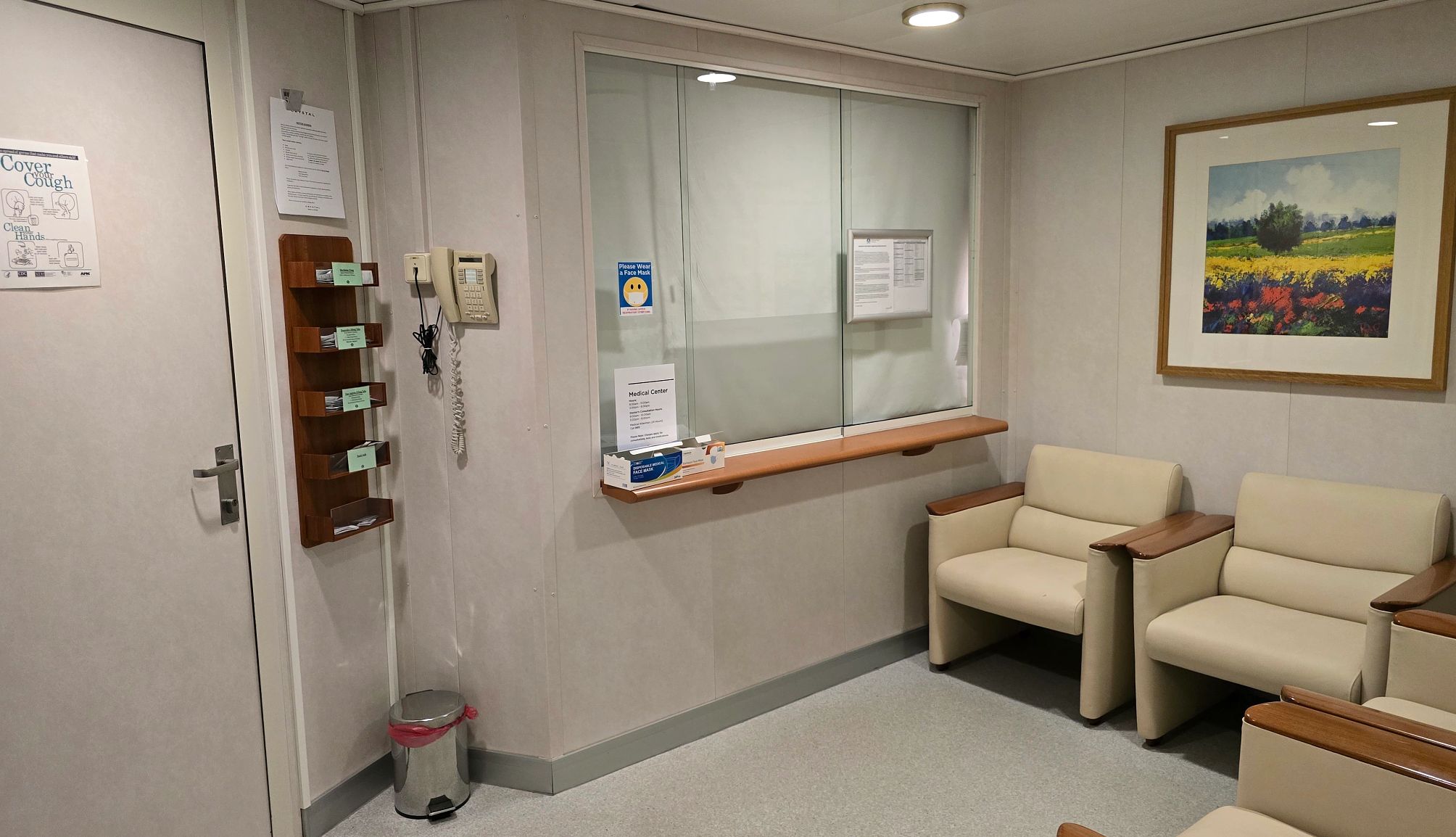
A suspected blood clot landed me in a cruise ship medical center | member's edition
- Select a language for the TTS:
- UK English Female
- UK English Male
- US English Female
- US English Male
- Australian Female
- Australian Male
- Language selected: (auto detect) - EN
Play all audios:

SMALL- AND MIDSIZE SHIPS ARE ALSO FULLY EQUIPPED “Our ships are equipped with the most modern medical equipment available in the medical market,” says emergency physician Ibrain Soto, M.D.,
the doctor on board _Crystal Serenity_, a ship that holds just 740 passengers. The ship follows the recommendations of the American College of Emergency Physicians (ACEP) regarding the
minimum amount of medical equipment to carry on board cruise ships. This includes an onboard laboratory, X-ray machine, cardiac monitor and defibrillator, an EKG, ventilator/respirator,
infusion pumps and an onboard pharmacy. Soto says the ship’s medical team includes one doctor and two nurses, who are required to have intensive care and emergency medicine training, plus
more than five years of experience in the field. “We are able to diagnose and treat all medical and trauma emergencies and provide initial stabilization on board,” he says. “Our medical team
is also trained to manage chronic medical conditions for our crew and passengers of any age group. Ninety percent of our guests are over 50, so we are very familiar with the management of
medical conditions of patients in advanced age groups.” Ships even smaller than _Serenity_ — like Scenic, a cruise line with a fleet of ships that carry fewer than 230 passengers — also have
robust capabilities. In fact, according to Liz Baugh, Scenic’s lead medical consultant, who served as a medic in the Royal Navy, this line has an X-ray machine, blood analyzers, ECG and a
range of diagnostic tests, alongside a fully equipped emergency cart with a manual defibrillator and a military-grade portable ventilator. And the cruise line has even gone so far as to
scrutinize data from the last four years to build a robust pharmaceutical list to remain as self-reliant as possible. “We risk-assess everything based on the worst-case scenario and work our
way back from there to make sure that we have covered the risks within our control and have a plan for things that may come up unexpectedly,” says Baugh. This quest for self-reliance is
especially crucial given Scenic’s prevalence in some of the most challenging maritime environments: ships that sail in polar regions, where there is a lack of resources. WHAT CAN’T CRUISE
SHIPS HANDLE? While cruise ship capabilities are seemingly endless, there are some medical conditions beyond their purview. This includes more serious dental issues, though doctors can do
some basic (temporary) dental repairs. “Other areas that are beyond the ship’s capabilities would be complex cardiac or abdominal issues requiring specialist investigations,” Baugh says. She
explains that Scenic also has 24/7 access to a clinical second opinion service. Depending on the outcome of that discussion, Baugh says the doctor will then assess the urgency of the
condition and make a plan. Based on the degree of the emergency, Soto’s team would consult with a shoreside medical consultant. The passenger could be sent ashore in the next port of call
for further examination or medically evacuated directly from the ship, either by ground or air ambulance. A heart attack or stroke would need “urgent medical evacuation,” Soto says.
